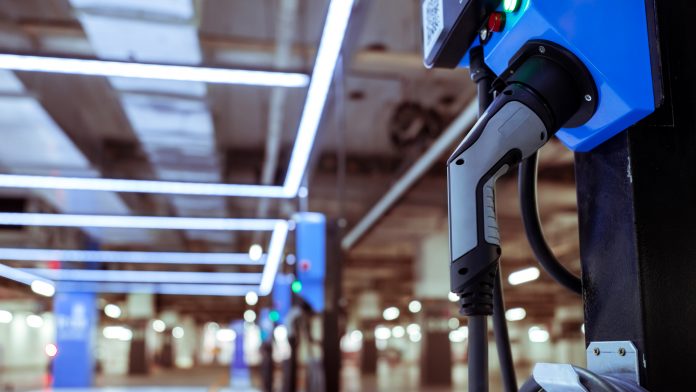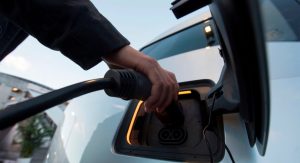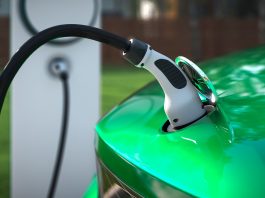Phillippe Vangeel, Secretary General at AVERE, argues that we must develop EV charging infrastructure to decarbonise transport by 2050 and to phase out internal combustion engines.
Europe is on the cusp of an electric revolution: zero-emission road vehicles, meaning those vehicles powered by an electric battery, are set to become the mainstream form of transportation soon. It is now the task of European legislators to ensure this EV transition happens as smoothly and as quickly as possible.
The policies currently under discussion in European institutions will be key to enabling a comprehensive rollout of electric cars and infrastructure across Europe. They must be set up to help deliver the broader goals of electrifying transport, meaning the phase-out of the internal combustion engine with the aim of reaching full decarbonisation in 2050.
AVERE – founded in 1978 – is the only European association specifically representing and advocating for electromobility. Throughout its decades of activity, it has built a reputation as a recognised actor promoting sustainable mobility across Europe and the world.
AVERE’s members consist of national associations supporting and encouraging the uptake of electric vehicles across Europe, and leading international companies in the sector. On top of its advocacy work, the association provides its members with a unique forum for exchanging knowledge, experience, and ideas on stimulating electromobility throughout the continent.
AVERE has engaged with policymakers through different channels. For example, it hosts conferences and webinars, offering a platform for exchange between the industry and the policy world. It also meets and counsels political decision-makers through dedicated interactions, in person or digitally, and participates in specific advisory groups, like the Commission’s Sustainable Transport Forum.
Furthermore, its activities in dedicated European projects have allowed the association to pioneer uniquely helpful tools to monitor and incentivise the uptake of e-mobility by consumers, for example, through the European Alternative Fuels Observatory (EAFO).
The challenges facing the transition to e-mobility
It is a time of intense activities for the association as many challenges on the horizon need appropriate answers. The first that comes to mind is the supply chain behind the production of batteries, the quintessential element of electric vehicles, which must be built up to be stable and sustainable at the same time.
There is also an ever-greater need for semiconductors in the European market to support EV production, and the European Commission has announced action to ensure a steady supply. This constitutes a crucial challenge, as supply must promptly meet consumers’ demand for the move to electromobility to succeed and not be slowed down, hampered, or even stopped.
The demand for e-mobility must also be enabled by ensuring that truthful information is made available to consumers, who must easily be able to tell a myth from a fact. Debunking false information – for example, on the performance, practicability or sustainability of EVs – is at the core of the EV sales growth of the last few years, as electric vehicles become more attractive. This educational work is an activity AVERE is particularly proud to engage in.
The broader policy framework in which this is happening should not be left out, of course. The recent policy package Fit for 55, which set the phase-out date for the sales of internal combustion engines, among other key provisions, is the cornerstone of the success of the European Green Deal. However, it can only succeed if we stick to the ambitious trajectory proposed by the Commission, and do not listen to less committed governments’ voices and interests backed by fossil fuel industries.

Creating an adequate EV charging infrastructure
Having adequate charging infrastructure on and off European roads is another crucial piece of the puzzle to complete this transition. We must have enough charging points on the roads of Europe to ensure drivers can easily make the best of their electric vehicles, and we must equally ensure that these are intuitive to use, both to charge and when paying for service. To achieve these goals, AVERE has published a discussion paper on the role of charging infrastructure and engages with policymakers to ensure its proposals are heard and understood.
We advocate for a holistic goal-driven approach when it comes to the development of EV charging infrastructures in Europe. It is essential to start by dispelling a falsehood: the discussion paper debunks the widespread myth that a lack of charging infrastructure will hamper EV uptake in the coming years, as long as the strong growth trajectory observed in both segments throughout recent years continues.
Electric vehicles differ fundamentally from fossil fuel vehicles because they are not reliant on public refuelling infrastructure to the same degree. Private charging is already a reality for most EV users in Europe. Public infrastructure development is mainly relevant for long-distance travel, high-use cases, heavy-duty transport, and, increasingly, for users without access to home charging. We need to foster and accelerate via legislation, mutually reinforcing market dynamics between a strong uptake of EVs and the rollout of infrastructure in many regions of Europe.
There are positive examples already: the Alternative Fuels Infrastructures Regulation, the newly proposed European legislation covering charging points for electric vehicles in Europe, shows a good direction by setting fleet-based targets, ensuring charging infrastructure grows hand in hand with EV uptake.
We are confident of our analysis and the legitimacy of our sources and of whom we represent in Brussels: our positions have been developed with our members from across the entire e-mobility ecosystem – we do not advocate for the particular interest of individual actors, but indicate the way to policymakers who wish to choose an ambitious path on behalf of the entire e-mobility ecosystem.
Smart charging technology
But addressing target levels alone is not enough. Innovation in technologies plays an equally important part, with a prominent example being smart charging. Smart charging, meaning a charging system where electric vehicles, charging stations, and charging operators share data connections, will enable our energy providers and distributors to balance grid loads and save energy system costs as EVs become the norm on European roads.
Smart charging might also benefit consumers. Vehicle-to-grid (V2G) technologies are increasingly nearing maturity, meaning the capacity of vehicle batteries to feed energy back into the grid when not in use. The broader deployment of this technology can lead to economic benefits for the end-user, who can be compensated for the energy they input into the system.
AVERE strongly supports technological innovation on smart charging, V2G, and other key technologies such as plug-and-charge. It offers dedicated spaces for the presentation of research and acts as a space where academics, scientists, and industry leaders can meet. The Electric Vehicle Symposium, taking place in Europe every three years, with the next edition planned in June 2022 in Oslo, is our flagship event offering such opportunities. These occasions are vital to bridge the ‘valley of death’ of innovation and transform lab results into products on the market, ultimately benefiting end-users and convincing them to switch to electric driving.
The future milestones
So if we look at the near future, what are the milestones we must achieve to produce results?
- An ambitious, coherent Fit for 55 policy package: the Commission’s proposal, while overall recommendable, has space for improvement. It is now essential that the Member States and MEPs focus on improving it and do not water it down, which would jeopardise the achievement of the European climate goals;
- The setting of an ambitious phase-out date for the internal combustion engine: the time of fossil fuel vehicles is over. They produce emissions, they pollute, and they are more expensive to own than an EV over their life cycle in most EU countries. The better technology is here, and ICE vehicles cause too much damage to the climate to still be allowed to be part of the market. We need to phase them out soon. According to AVERE, this should happen by phasing out new ICE sales no later than 2030.
- Implementation of ambitious binding AFIR targets so that enough infrastructure is in place. European legislation, as advanced as it might be, is only as effective as its implementation. Therefore, the EU must ensure the Member States are capable and willing to implement the new targets through their national plans over the coming years; and
- Purchase cost parity, which is predicted for around 2026, will be a tipping point for consumer uptake. Price parity will mean the last natural barrier to the mass uptake of e-mobility will finally go down. Progress in digital and battery technologies will also continue to encourage EV uptake.
These four milestones frame the advancement of the electric revolution of road transport, whose completion will be a turning point in our fight against climate change. We look forward to continuing our contributions to the legislative debate and to furthering technological progress as we approach this goal.
Phillippe Vangeel
Secretary General
AVERE – The European Association for Electromobility
www.avere.org
https://www.linkedin.com/company/avere/
https://www.facebook.com/AVERE.The.European.Association.For.Electromobility/
https://twitter.com/avere_eu
Please note, this article will also appear in the eighth edition of our quarterly publication.










